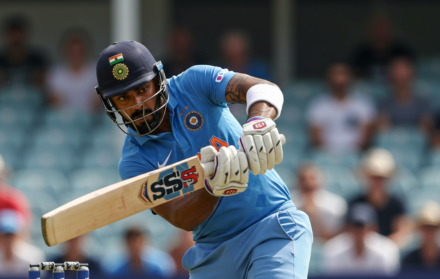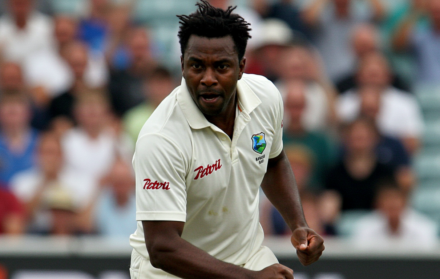
How To Bowl On Flat and Green Pitches In Cricket
Cricket pitches play a crucial role in determining the nature of the game and the strategies employed by bowlers to dismiss batsmen. Two common types of pitches encountered in cricket are flat pitches and green pitches, each posing unique challenges and requiring distinct bowling techniques. By understanding the characteristics of flat and green pitches and adopting the right tactics, bowlers can increase their chances of success.
First, it is essential to comprehend the differences between flat pitches and green pitches. Flat pitches are considered batting-friendly surfaces with minimal assistance for bowlers. On the other hand, green pitches are characterized by a lush green cover, indicating extra moisture, which aids the bowlers in generating swing and seam movement.
Bowling on flat pitches requires careful planning and execution. This includes varying the pace, using deceptive variations, and focusing on disciplined line and length to create opportunities for wickets. Strategies must also be devised to counter the batsmen’s dominance, as they are likely to score more freely on these surfaces.
In contrast, bowling on green pitches presents an opportunity for bowlers to exploit the favorable surface conditions. Effective techniques involve harnessing the extra help from the pitch by pitching the ball up and inducing swing or targeting the seam movement to trouble the batsmen. Bowlers must also adapt their game to the swing and seam movements exhibited by the pitch.
When comparing bowling on flat and green pitches, key differences in tactics, techniques, and strategies emerge. The player’s skill set plays a vital role in determining their performance on different pitches. Factors like swing, seam movement, bounce, and grip influence the outcome of bowling on various pitches. Adapting to the changing pitch conditions is crucial for bowlers to succeed.
By understanding the nuances of bowling on flat and green pitches, bowlers can adjust their approaches accordingly. Developing a repertoire of tactics, techniques, and strategies specific to each pitch type is essential for bowlers to excel in the game of cricket.
Understanding the Different Types of Cricket Pitches

When playing cricket, it is crucial to have a comprehensive understanding of the different types of pitches. This understanding will enable you to adapt your bowling strategy accordingly, increasing your chances of success. Here are the key factors to consider when analyzing cricket pitches:
- Flat pitches: One type of cricket pitch is the flat pitch. On these pitches, bowlers encounter limited assistance, with an even bounce and minimal turn. To outsmart batsmen, bowlers must focus on accuracy and vary their pace.
- Green pitches: Another type of pitch is the green pitch. These pitches are damp and provide assistance to seam bowlers. The ball tends to move sideways, presenting opportunities for swing and seam movement.
- Dry and dusty pitches: The third type of cricket pitch is the dry and dusty pitch. Spin bowlers favor this type as the dry surface allows the ball to grip and turn sharply. To be successful, exploiting the rough patches on the pitch becomes crucial.
By understanding the different types of cricket pitches, you can strategize and adapt your bowling techniques to optimize your chances of success. Remember, a thorough knowledge of the pitch can make all the difference in the game.
Bowling on Flat Pitches
Bowling on flat pitches in cricket requires specific techniques and strategies for success. Here are some tips to consider:
- Varied Pace: Adjust your pace when bowling on flat pitches to keep the batsman guessing and prevent them from comfortably timing their shots.
- Maintain Line and Length: Consistency in delivering the ball on a good length and outside off stump is essential on flat pitches to restrict the batsman’s scoring opportunities.
- Vary Angles: Experiment with different angles of attack, such as coming wide of the crease, to create doubt in the batsman’s mind when bowling on flat pitches.
- Change Field Placements: Adapt your fielding positions to exploit any weaknesses in the batsman’s technique when bowling on flat pitches, such as setting a defensive field or placing fielders in catching positions for false shots.
- Mix up Deliveries: Employ variations like cutters, slower balls, or off-cutters when bowling on flat pitches to deceive the batsman and disrupt their rhythm.
What are Flat Pitches in Cricket?
Flat pitches in cricket refer to playing surfaces that have little to no unevenness or variation in their bounce. These pitches are typically dry and lack any grass covering, making them more batsman-friendly.
The ball tends to come off the pitch at a predictable height, allowing batsmen to play their shots with confidence. Bowlers often face challenges on flat pitches as they struggle to generate movement or seam off the pitch.
They rely on variations in pace, spin, or accuracy to trouble the batsmen. Bowling on flat pitches requires bowlers to be patient, skillful, and adapt their tactics to restrict runs and take wickets.
Flat pitches in cricket refer to playing surfaces that have little to no unevenness or variation in their bounce. These pitches are typically dry and lack any grass covering, making them more batsman-friendly.
The ball tends to come off the pitch at a predictable height, allowing batsmen to play their shots with confidence. Bowlers often face challenges on flat pitches as they struggle to generate movement or seam off the pitch.
They rely on variations in pace, spin, or accuracy to trouble the batsmen. Bowling on flat pitches requires bowlers to be patient, skillful, and adapt their tactics to restrict runs and take wickets.
Tactics and Techniques for Bowling on Flat Pitches

- When bowling on flat pitches in cricket, bowlers can employ specific tactics and techniques to enhance their performance.
- Varying the pace, line, and length of deliveries is a key strategy to consider. This variation can make it difficult for batsmen to settle into a rhythm.
- Accuracy is crucial. Bowling with consistent line and length reduces scoring opportunities and puts pressure on the batsman.
- Using angles to create subtle changes in line and length can deceive batsmen and induce false shots. It is an effective tactic to use on flat pitches.
- Cutters and slower balls can exploit the lack of grip on flat pitches and generate wicket-taking opportunities. Bowlers should utilize these variations.
- Collaborating with fielders is important. By working together, bowlers can set aggressive fields and create chances through catches or run-outs.
By implementing these tactics and techniques, bowlers can have a greater impact on the game when bowling on flat pitches.
Dealing with Batsmen’s Dominance on Flat Pitches
Dealing with batsmen’s dominance on flat pitches is a crucial aspect of bowling in cricket. To counter the advantage that batsmen have on these pitches, bowlers can employ certain strategies and techniques. Here are some suggestions:
- Change of pace: Varying the speed of the deliveries can disrupt the timing of batsmen, making it harder for them to score freely.
- Mixing up lengths: Bowling a combination of full, short, and good-length deliveries can keep batsmen guessing and prevent them from getting too comfortable.
- Varying the angle: Altering the angle of delivery, such as bowling from wider of the crease or around the wicket, can create different angles for batsmen to handle.
- Use of slower balls and cutters: Delivering slower balls or cutters with subtle variations in grip and release can deceive batsmen and induce mistimed shots.
- Bowling wider lines: Bowling outside the off-stump or wider can force batsmen to play risky shots, increasing the chances of them making mistakes.
By incorporating these tactics, bowlers can negate the advantage of flat pitches and put pressure on batsmen, leading to more favorable outcomes for the bowling team.
Variations and Strategies for Success on Flat Pitches
To achieve success on flat pitches in cricket, bowlers need to incorporate a range of variations and strategies. These techniques can include the change of pace, using cutters, aiming for extra bounce, utilizing reverse swing, and mixing up lengths.
The change of pace involves varying the speed of deliveries to keep batsmen guessing. Cutters are deliveries that grip the surface and deviate off the pitch. To generate extra bounce, bowlers aim to hit the deck hard.
Reverse swing can be achieved by utilizing the older ball, which is effective on dry pitches. Bowlers can disrupt the batsman’s timing by alternating between full-length deliveries and shorter ones. By employing these strategies, bowlers can overcome the challenges posed by flat pitches and enhance their chances of success.
In the rich history of cricket, Anil Kumble, the legendary Indian spinner, demonstrated exceptional variations and strategies on flat pitches throughout his career. He mastered deliveries like the googly and the flipper, further solidifying his status as one of the greatest spin bowlers of all time. Kumble’s success on such pitches showcases the effectiveness of variations and strategies in achieving success on flat pitches.
Bowling on Green Pitches

Bowling on green pitches requires adaptability and skill. The table below highlights key factors and strategies for success:
Factors influencing cricket pitch conditions dictate various strategies for bowlers to exploit them effectively. Moisture on the pitch prompts bowlers to seam the ball off the surface, while the presence of grass suggests pitching the ball slightly fuller to extract movement.
When swing is prevalent, bowlers utilize lateral movement to deceive batsmen, and with pace, they aim to exploit the extra bounce to trouble the opposition. In cases of variable bounce, maintaining a consistent line and length becomes paramount for bowlers to maintain pressure on batsmen. Each factor requires a nuanced approach from bowlers to adapt and capitalize on the conditions presented by the pitch.
In a crucial cricket match, the bowler successfully exploited the favorable conditions on a green pitch. By consistently hitting the right areas and obtaining movement off the seam, he took crucial wickets and led his team to victory. Bowling on green pitches requires precision and adaptability, but the rewards can be remarkable.
What are Green Pitches in Cricket?
Green pitches in cricket are playing surfaces with a significant amount of grass cover. Generally, these pitches assist bowlers as the ball is more likely to seam and swing. The grass allows the ball to grip and deviate off the surface, creating additional challenges for batsmen.
Bouncing irregularly, the ball makes it difficult for batsmen to play their shots. Bowlers, on the other hand, can use this extra movement and variable bounce to their advantage by employing skills like seam bowling and swing bowling. Ultimately, green pitches offer an enthralling contest between the bat and the ball, putting bowlers’ skills and players’ batting abilities to the test.
An illustrative example of the impact of green pitches is the famous 2015 test match between Australia and England at Trent Bridge. In that match, the pitch was exceptionally green. England’s bowlers skillfully exploited the conditions, causing mayhem for the Australian batsmen.
Particularly, Stuart Broad’s adept swing bowling yielded outstanding results, securing 8 wickets for just 15 runs and decimating the entire Australian batting lineup. Undoubtedly, the green pitch played a pivotal role in England’s victory, highlighting the significant effect green pitches can have on the game of cricket.
Tactics and Techniques for Bowling on Green Pitches

- To be able to successfully bowl on green pitches in cricket, players must employ specific tactics and techniques. Here are some practical strategies to consider:
- Utilize swing and seam movements: Green pitches offer more assistance to bowlers in terms of swing and seam. Focus on perfecting your skills in swinging the ball in the air and making it deviate off the pitch.
- Adjust line and length: Bowl slightly fuller to exploit any movement off the pitch and make it challenging for batsmen to judge the ball accurately.
- Vary your pace: Change the speed of your deliveries to keep the batsmen guessing. Mixing up slower deliveries with quicker ones can create opportunities for wickets.
- Target the right areas: Aim to bowl at or around the off-stump to force the batsmen to play shots on the front foot and increase the chances of edges or mistimed shots.
Fun fact: Bowling on green pitches is considered a challenging task due to the extra bounce and lateral movement the bowlers can extract from the surface.
Utilizing the Extra Help from the Pitch on Green Pitches
Utilizing the extra help from the pitch on green pitches is crucial for bowlers to maximize their performance in cricket. Here are some key strategies to consider when bowling on green pitches:
- Understanding the pitch: Analyze the pitch’s condition and behavior to determine the amount of assistance it offers to bowlers.
- Bowling line and length: Focus on pitching the ball in the right areas to exploit the extra bounce, swing, and seam movement provided by the green pitch.
- Varying pace and length: Change the pace and length of deliveries to keep the batsmen guessing and capitalize on any uneven bounce or movement.
- Bowling swing and seam: Work on bowling with precision and accuracy to effectively utilize the swing and seam movement available on green pitches.
- Utilize swing-friendly deliveries: Master the art of bowling inswing and outswing to further trouble the batsmen on green pitches.
By incorporating these strategies and adapting to the conditions of green pitches, bowlers can significantly improve their chances of success in cricket.
Adapting to the Swing and Seam Movements on Green Pitches
Adapting to the swing and seam movements on green pitches is crucial for bowlers in cricket. The key is to understand the conditions and adjust strategies accordingly. Here are some tips to excel on these pitches:
To excel in bowling, players must master several key techniques and strategies. Firstly, grip and seam position play a crucial role; holding the ball slightly on the shiny side promotes swing, while adjusting the seam can exploit any movement off the pitch.
Secondly, focusing on line and length is essential; pitching the ball up encourages batsmen to drive, increasing the likelihood of edges or mistimed shots.
Thirdly, employing varied deliveries such as slower balls, cutters, or well-disguised swing deliveries keeps batsmen guessing and off balance.
Lastly, patience and consistency are vital; working in partnerships to build pressure can force mistakes from the opposition, leading to wickets.
Mastering these aspects of bowling allows players to effectively challenge and outsmart batsmen on the field.
Comparison between Bowling on Flat and Green Pitches

When it comes to bowling in cricket, how you adapt to the pitch can make or break your performance. In this section, we’ll explore the nuances of bowling on flat and green pitches, uncovering the key differences in tactics, techniques, and strategies. We’ll also examine the impact of player skill sets on their performance, and delve into the various factors that influence bowling performance on different pitches. Get ready to dive into the art of bowling and uncover the secrets to success on contrasting cricket pitches.
Key Differences in Tactics, Techniques, and Strategies
On flat pitches, bowlers focus on accuracy and consistency, employing techniques like bowling straight and varying pace to challenge batsmen.
Conversely, on green pitches, tactics shift towards exploiting swing and seam movement, with techniques involving bowling fuller and generating additional movement. Strategies on flat pitches need to adapt to batsmen’s dominance, while on green pitches, bowlers capitalize on the extra assistance provided by the pitch to gain an advantage.
In a similar vein, let me share a true story. During a cricket match on a flat pitch, a bowler used variations in pace and accuracy to deceive the batsmen. On the other hand, on a green pitch, another bowler utilized swing and seam movements to take advantage of the conditions.
These key differences in tactics, techniques, and strategies highlight the importance of adapting to different pitch types in cricket.
Impact of Player Skill Sets on Performance
In the game of cricket, the performance of a bowler is greatly influenced by their skill set. This impact is especially noticeable when it comes to bowling on different types of pitches: flat pitches and green pitches.
When playing on flat pitches, bowlers must focus on their accuracy and skill variations in order to outsmart the batsmen. However, when on green pitches, it is essential for bowlers to master the art of swing and seam bowling.
The ability to control swing, seam movement, and adapt to the unpredictable bounce becomes crucial for success. In this context, player skill sets play a vital role in determining their performance in different pitch conditions.
Factors Influencing Bowling Performance on Different Pitches
Factors Influencing Bowling Performance on Different Pitches
Bowling performance in cricket can vary significantly depending on a variety of factors. These factors play a crucial role in determining how well a bowler performs on different pitches. Some of the key factors that influence bowling performance on various pitches include pitch conditions, weather conditions, the skill of the bowler, and the type of ball used.
When it comes to flat pitches, bowlers may face difficulties in extracting movement off the pitch. In such situations, accuracy and variation in pace become extremely important. Bowlers need to focus on bowling precisely and mixing up their speeds to keep the batsmen guessing. These factors can greatly impact their performance.
On the contrary, green pitches provide more assistance to bowlers. The ball swings and seams more, creating additional challenges for batsmen. In such conditions, bowlers need to quickly adapt to the pitch conditions and make use of these movements to their advantage. It is important for them to employ suitable tactics and strategies to maximize their performance.
To enhance their bowling performance, bowlers should thoroughly analyze the pitch conditions. By understanding the nature of the pitch, they can exploit any assistance it offers. Whether it’s making the ball swing on green pitches or bowling accurately on flat ones, bowlers can adjust their techniques accordingly. This adaptability is essential for success on both types of pitches.





